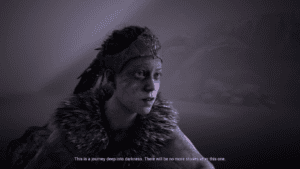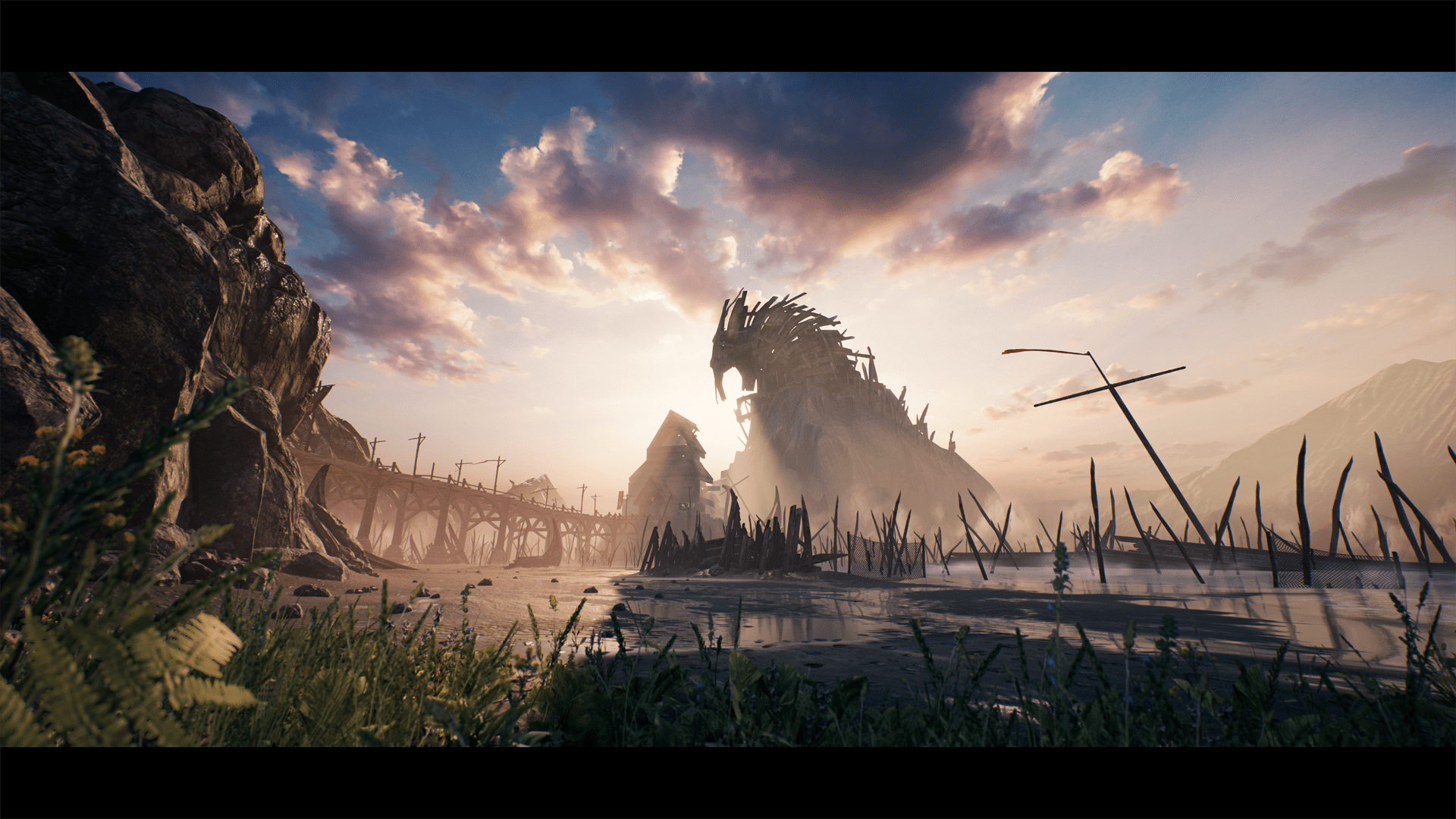When I first saw announcements and details leaking about the upcoming game by Ninja Theory, I was intrigued mainly because of the title, Hellblade. It made me think of them badass, JRPG’s that have fast paced guitar riffs and over-the-top concepts that even make the most idealistic people questionable.
Throughout the 8 – 10 hour game, it doesn’t massively express acts of heroism and overcoming the odds, but it continuously expands on the mental defeat and torment of the games main protagonist, Senua and that is what really drives the game to be as unique and experimental as it’s audience anticipated for it.

This is where the Unique Selling Point of the game really lies. The psychological experience that this character goes through. Senua suffers from mental psychosis and hallucinations which are really made clear by the opening credits. The game even says so before the game starts that this game is better experienced with headphones and it not only really embellishes the game but it’s actually vital to your gameplay performance.
These voices take on two personas, the Angels and Demons. You really do get that split between positive and negative with the voices that Senua encounters. On one side of your headset, you have a voice complimenting you, motivating you and not letting you give up and on the other end, you’ll have a voice that really tries to push your buttons and make you feel stupid for your mistakes in game through puzzles and damage in combat.
They get under your skin and I’ve seen many complain about how these voices are annoying, they put you off from objectives and that they never go away. Jeez, I wonder why they did that? I don’t know, maybe because there isn’t an on/off switch for schizophrenia? That’s the whole point. There is never really a moment in this game where the voices aren’t there unless it’s a specific moment in the game. They’re always there and they’ll do this really dynamic and terrifying effect where one voice is quieter and distant but the other is right in your ear screaming and this aspect of the game is handled with such ferocity and authenticity.
You can also see the effect these voices are having on Senua. When you look at her character and the expressions of her insanity, you know that more is going on in her head than one might perceive. It was such a gripping and relentless performance by Melina Juergens who plays Senua, she killed it and made it something infernally beautiful.
This game is a lot more about what you’re being told rather than what you see. You really have to listen in the game because the voices really help you out. For example, if you’re in combat and you’re facing two demons. One is in front and one is behind. When the demon from behind is about to strike and you can’t see it, the voices notify you of this danger and they really save your skin.
The players ability in combat isn’t due to a tutorial or HUD because there is neither in the game. The players skill in combat lies purely on the player’s discovery and mistakes. You’ll find out the enemies weaknesses and stuff you could do in a battle 75% through the game that was evident from the very start. The difficulty never really comes from the quality of the demons and bosses you fight but it more comes from the quantity of them. There’s a few sequences where you’re surrounded by up to 10 enemies and again, that’s where you’ll need the voices to notify you of enemies whereabouts.
Don’t get me wrong, it’s not an annoying mechanic in the game, it’s actually a very metaphorical one at that. There is a great depiction of internal conflict in the combat. There’s no reward for defeating enemies in a battle other than progressing forward through the game. You don’t get a new sword or new armour, it’s just another obstacle in your way and all that’s going to be ahead of you after that is more obstacles and I feel like that’s phenomenal imagery of what mental problems can be like.
The combat may seem very repetitive and microscopic from the first 2 hours of the game. There’s a lot of puzzles and there’s only a small amount of confrontations but after you get past that, it really picks up very quickly. You’ll get introduced to new and harder enemies which again, won’t be very difficult on their own but once there’s like 4 of them surrounding you, that’s where you need to be more tactical and aware of your surroundings.
The collectibles in this game don’t really add much to the gameplay other than teaching you about Norse and Celtic Mythology which is what this games era is revolved around. You’ll get introduced to these early on by a character named Druth, a dead slave who guides you throughout a lot of the game’s world and lore. He takes on the embodiment of an apparition and that’s one of the things I didn’t like.
WARNING! SPOILERS AHEAD!
At the beginning of this game, it addresses the fact that you shouldn’t believe what you see. Listen to your voices and that is so true that you don’t even realise it until the end of the game.
It’s something that I kept in mind when I first heard it and I tried to be the smart gamer and pick out the false perceptions in reality but I didn’t realise that the whole game was inside Senua’s head.
Even that permadeath warning that was notifies the player that if they die too many times in the game then their game progress will be deleted and you’ll be sent back to the very beginning, even if you die in the final boss battle and you’re only at one death remaining.
That wasn’t true!
It was made to make the player feel the sense of panic and appreciation of every life they have. Truly, nothing in this world is reality, it is only Senua’s reality. What she sees and how she depicts the torment and troubles that she is experiencing and they’re adapted through the demons, puzzles, battles, bosses and settings in the game. Puzzles are a lot more than breaks from tension. Battles are much more than progress. Everything is her internal reality after she witnessed the brutal murder and religious sacrifice of her love, Dillion which explains why Senua has this gritty and fearful depiction of the underworld.
The bosses have their own distinct abilities and they can take a length of time to defeat. One of the Hela reminds me a lot of The Mouth of Sauron from The Lord of the Rings so that’s all I could think of when I heard it. I particularly love how the ending is achieved with the endless wave of bosses and demons attacking you until you die. It was an amazing and touching way to end her story and it really makes you look upon yourself. The ending also unveils a use of these collectibles and if you collect all of the, you uncover a secret ending that reveals the truth of Druth. (No pun intended).
This game is in my opinion, one of the most important of the decade. It’s riveting, haunting, heartbreaking, intense and masterfully written and created. It’s an experience that I will take with me long after the game.
In a ravishing and powerful way, we can all see a little of Senua in ourselves. Someone who’s just trying to fight back for the ones they love and can lose themselves along the way.
9.5/10 = An Atmospheric Masterpiece
Hellblade: Senua’s Sacrifice is available now on PlayStation 4 and PC.
Words by Kieran Hunter
